Melnik 55
Taittinger
Les Folies De La Marquetterie Brut Champagne Pinot Noir - Chardonnay Blend
back of the bottle explains that this wine is 45% Chardonnay and 55% Pinot Noir harvested from the vineyard by the name of Folies de la Marquetterie, first pressing, oak aged. So it’s a single vineyard rendering.
It’s delicious. Lovely bouquet and palate presence, super fresh citrus that expands on the palate, finishes clean and long. I like the density and weight coupled with freshness. And it’s one quarter the price of CdC. — 4 years ago
Maritana Vineyards
La Rivière Russian River Valley Chardonnay 2018
Pale straw in color with a golden hue.
Strong nose of citrus, vanilla, spices, oak, yellow apples, pears and white pepper.
Full bodied, buttery and smooth, with medium plus acidity.
Dry on the palate with citrus, melons, apples, light grapefruits, spices, hazelnuts, oak, vanilla and peppercorn.
Nice length on the finish with spices and almonds.
This is a very tasty Chardonnay from Russian River Valley.
Spicy and intriguing. Interesting with a buttery, smooth mouthfeel. Nicely balanced and Oaky.
Right out of the bottle, it is in your face kind of wine, but as it opens up, it calms down a bit with less oak and vanilla notes, so give it 20 minutes.
Will be nice to see how this evolves in 5 to 7 years.
Good by itself or with food. I paired it with a cheese plate.
14.5% alcohol by volume.
90 points.
$55. — 5 years ago
Huchu Homare Brewery
Watari Bune Shiboritate Namazake Genshu Junmai 55 Ginjo Sake
Dry and bold with just a hint of floral and fruit. Great in the mouth, will drink again. — 5 years ago
Capafons-Ossó
Mas de Masos Priorat Grenache Blend 2005
Vila. Tast 1989-2019: 30 anys d'Història del Priorat Modern. 55% Garnatxa, 30% CS, 10% Carinyena, 5% Syrah. 45,00.
06.05.19 — 6 years ago
Prime Cut 55
California Cabernet Sauvignon 2012
Nice easy drinking wine on the sweeter side. Paired well with pesto chicken — 7 years ago
River Road Vineyards
Un-Oaked Sonoma County Chardonnay 2017
Love it. Especially for the price! 55 degrees and decanter. I know, I know. Decanter white wine. Decanting never hurts good wine! — 7 years ago
Château Brane-Cantenac
Grand Cru Classé en 1855 Margaux Red Bordeaux Blend 2005
I have a six-pack of this 05. I thought after 10 years in bottle, it would be interesting to check in on its evolution. While tasty, I’ll wait another 8-10 to open another. Even after 2-3 hours in the decanter, it’s still a very young adolescent. On the nose, slightly sour blackberries & dark cherries, dark currants, baked black plum, haunting blue fruits, anise, whiff of spice, steeped tea, dry stones, dry crushed rocks with dry top soil, caramel, vanilla with fresh & dry red florals. The body is thick & full. Tannins are starting to round out. It’s velvety on the palate. The fruits are; bright, fresh & ripe and really show the greatness of the 05 vintage. Dark currants, blackberries, dark cherries, baked black plum, haunting blue fruits, baked strawberries, cherries, raspberries on the long set, dark spice, clay & loamy dry top soil with crushed rocks, dry stones, cigar with ash, graphite, dry stems, slight herbaceous character, mint, used leather, clove, caramel, vanilla, fresh & dry red florals with violets. The round acidity is about perfect. The structure and length are still strong. The balance is in harmony. As for the long finish, it’s lush, ruby, rich and well polished. Photos of; Chateau Brane Cantenac, large wood vats, Henri Lurton and Estate vines. Producer notes and history...Chateau Brane Cantenac began in the early 17th century. At the time, the estate was known as Domaine Guilhem Hosten. Even that far back, wine was produced from the property. In fact, the wine was so highly regarded it was one of the more expensive wines in Bordeaux. It sold for almost as much money as Brane Mouton. This is interesting because of who went on to buy the vineyard in the 1800’s. The Baron of Brane, also known as “Napoleon of the Vineyards”, purchased the Chateau in 1833. At the time of the sale, the estate was called Chateau Gorce-Guy. To get the funds needed to purchase the Margaux vineyard, the Baron sold what is now called Mouton Rothschild, which was at the time of the sale, known as Chateau Brane-Mouton. Not such a good move with hundreds of years in hindsight! In 1838, the Baron renamed property taking his name and the name of the sector where the vineyards were located and called it Chateau Brane Cantenac. The Chateau later passed to the Roy family, who were well-known in the Margaux appellation in those days, as they owned Chateau d’issan. Moving ahead to 1920, the Societe des Grands Crus de France, a group of merchants and growers that owned several chateaux located in the Medoc including; Chateau Margaux, Chateau Giscours, and Chateau Lagrange in St. Julien, purchased Chateau Brane Cantenac. Five years later, M. Recapet and his son-in-law, François Lurton, took over Brane Cantenac along with Chateau Margaux. Lucien Lurton (the son of François Lurton) inherited Brane Cantenac in 1956. Today, the estate is still in the hands of the Lurton family. Brane Cantenac is owned and run by Henri Lurton. After being given the responsibility of managing Brane Cantenac, it was under the direction of Henri Lurton that large portions of the vineyard were replanted. Vine densities were increased, the drainage systems were improved and the plantings were also, slowly changed. The vineyard of Brane Cantenac is planted to 55% Cabernet Sauvignon, 40% Merlot, 4.5% Cabernet Franc and .5% Carmenere. Carmenere was used for the first time in the 2011 vintage. The only other Chateau I know that still uses Carmenere is Clerc Milon. The 75 hectare Left Bank vineyard of Brane Cantenac is essentially unchanged since it earned Second Growth status in the 1855 Classification. At least that is the case with the 45 hectares used to produce the Grand Vin of Brane Cantenac. Those 45 hectares are planted surrounding the Chateau. Those vines are located just in front of the Cantenac plateau and are the best terroir that Brane Cantenac owns. They have other parcels, which are further inland and much of those grapes are placed into their second wine, Le Baron de Brane. Those additional hectares can be divided into 3 main sections. Behind the Chateau, they have 15 hectares of vines on gravel and sand, 10 hectares across the road with sand, gravel and iron and a 13 hectare parcel with gravel called Notton, which is used for their second wine. The vineyard is planted to a vine density that ranges from 6,666 vines per hectare on the plateau and up to 8,000 vines per hectare for the vines located behind chateau, in their sandier soils. The higher levels of vine density are always found in the newer plantings. The terroir of Brane Cantenac consists of deep gravel, sand and clay soil. Experiments in the vineyards are currently looking at becoming more organic in their vineyard management. Today, more than 25% of Brane Cantenac is farmed using organic farming techniques. It is expected that over time, the amount of hectares farmed with organic methods will be increased. Brane Cantenac has gone through 2 relatively recent modernization’s in 1999, when they added began adding the first of their smaller vats to allow for parcel by parcel vinification and then again in 2015 when they completed a much more complete renovation of their cellars and vat rooms. While Brane Cantenac is a traditional producer, they are no stranger to technology as they were one of the first estates to embrace optical grape sorting machines. In very wet vintages, they can also use reverse osmosis. To produce the wine of Chateau Brane Cantenac, the wine is vinified in a combination of temperature controlled, traditional, 22 oak vats, 18 concrete tanks and 20 stainless steel vats that vary in size from 40 hectoliters all the way up to 200 hectoliters, which allows for parcel by parcel vinification. 40% of the fermentation takes place in the oak vats. The oldest vines are vinified in vats that are selected to allow for separate parcel by parcel vinification. The younger vines are vinified more often together in the same vats. However, the Carmenere is entirely micro-vinified, meaning that those grapes were completely vinified in barrel, using micro-vinification techniques. This can also happen because the amount of grapes produced is so small. Some vats can be co-inoculated, meaning they go through alcoholic fermentation and malolactic fermentation simultaneously. At Chateau Brane Cantenac, malolactic fermentation takes place in a combination of French oak tanks and barrels. The wine of Brane Cantenac is aged in an average of 60% new, French oak barrels for 18 months before bottling. The initial 2 months of aging is done with the wine on its lees, which adds more depth to the wine. There second wine is Le Baron de Brane. Le Baron de Brane is not new. In fact, previously, the second wine went under the name of Chateau Notton, which took its name from one of the main parcels where the grapes were planted. During the late 1950’s and into the 1960’s, having a second wine was important as the estate declassified 3 vintages, due to extremely poor, weather conditions in 1956, 1960 and 1963. Production of Chateau Brane Cantenac is about 11,000 cases per year. — 8 years ago

Château Les Carmes Haut-Brion
Pessac-Léognan Red Bordeaux Blend 2015
The 2015 Les Carmes Haut-Brion is the first vintage vinified with 100% infusion, including 55% whole bunches. This has a much more intense bouquet compared to the 2014: copious blackberries, blueberry and crushed violet scents, hints of blood orange and a light cassis touch with time. The palate is medium-bodied with fine density and precision, good grip, edgy tannins with clearly more mineralité percolating through the finish. Excellent. Tasted at the Les Carmes Haut-Brion vertical at the château. (Neal Martin, Vinous, October 2022)
— 3 years ago
Castello di Bolgheri
Varvàra Bolgheri Super Tuscan Red Blend 2016
May 8, 2021. Welcome home dinner w/ Jack D, Don, and LO. 55% Cabernet Sauvignon, 25% Merlot, 10% Syrah, 10% Petit Verdot. Juicy black fruit, baking spices, leather. Well balanced and totally yummy. — 4 years ago
Gaja
Ca'Marcanda Promis Toscana Sangiovese Blend 2017
Monday evening and tonight I have opened the 2017 Gaja Ca' Marcanda Promis Toscana. This is a blend of 55% Merlot, 35% Syrah and 10% Sangiovese from Castagneto Carducci in Tuscany, Italy.
On the nose there is raspberry, strawberry, plum, there is a savory gamey component, baking spices, licorice, pepper, clay and earth.
On the palate I am getting cherry, raspberry, red currant, licorice, herbs, lavander, graphite and earth.
This wine is medium to full bodied with medium + acidity and medium + firm sandy tannins that has a long fresh red and black fruit finish. The week ahead looks like it is going to be a fantastic week and I am looking forward to it being full of wonderful fall beginnings. Have a great week, please be safe and stay healthy. Nostrovia! 🍷🍷🍷🍷 — 5 years ago
Château Canon-la-Gaffelière
Saint-Émilion Red Bordeaux Blend 2016
Located on the outskirts of the medieval town of Saint-Emilion, at the southern foot of the slope. A blend of 55% Merlot, 35% Cab Franc &10% Cab Sauv, aged in 60% new oak, deep Ruby with aromas of dark fruit accompanied by cedar & spice. The palate shows fresh ripe dark berry fruits, cacao, tobacco and espresso notes. Well balanced, perfect tannins, a joy to drink but cellar until 2022 for a better experience. Tasting Sample! — 5 years ago
Château Smith Haut Lafitte
Grand Cru Classé Pessac-Léognan Cabernet Sauvignon Blend 2015
55 hectares of superb gravelly vineyards, run by the Cathiard family, often referred to as the "archetypical Graves." A blend of 63% Cabernet Sauvignon, 33% Merlot, 2% Cabernet Franc & 2% Petit Verdot, Organic, very very dark red with aromas of black fruits with an array of herb & spice notes. On the palate berries, cherry, licorice and cacao with pepper spice wrapped in a great mouthfeel. Firm full tannins, lingering, ending with fruit, spice and exotic earthy character. Extremely Nice! — 7 years ago
Rene Rostaing
Ampodium Côte-Rôtie Syrah 2010
Love this Rostaing Syrah created from 12 or 13 different vineyards. The style encompasses everything thing I love about Northern Rhône. At $50-$55, their 2010 vintage of Ampodium pushes quality close to their much more expensive single vineyard bottling for a 1/3 of the price.
It’s round and elegant. Lightly roasted, creamy dark fruits, used expresso grounds, savory meats, just a touch of bacon fat, soft, understated minerals, dry top soil with dark withering & fresh dark florals. The round and beautiful. The finish glides over the palate with persistence and puts a smile on your face. It was a magnificat pair with my Short Ribs and Yukon Gold Horseradish Potato Purée.
— 7 years ago
Hand of God (Mano de Dios)
Fingerprint Series Sobremesa Vineyard Red Blend 2010
Hand of God Fingerprint Series Red Blend 2010: Medium-full bodied. Excellent balance. Velvety tannins with layers of fruit flavors. Blackberry. Blueberry. Plum. Leather. Earth. Oak. Long smooth finish. Consisting of 55% Malbec, 35% Syrah & 10% Petit Verdot, this Argentine red blend presented nice structure & depth and after some breathing time, it released its true crowd-pleasing beauty. Definitely an outstanding wine selection with a very fitting name! En familia con el mano de dios! Cheers 🇦🇷🍷 — 3 years ago
Château Bellefont-Belcier
Grand Cru Classe St. Émilion Red Bordeaux Blend 2017
It's time for some Merlot on this #MerlotThursday.
Dark ruby in color with a reddish rim.
Strong nose of black plums, black currants, oak, vanilla, licorice, cloves, herbs, spices, earth and peppercorn.
Full bodied with medium plus acidity.
Dry on the palate with plums, cherries, oak, earth, vegetables, spices, tobacco leaf, dark coffee and black pepper.
Nice finish with fine grained tannins and tangy raspberries.
This is a young Merlot from Bordeaux. Showing mild complexity with a nice mouthfeel.
Good right out of the bottle, and better after 2 hours of airtime.
Will continue to age nicely in the next 10 to 15 years.
A good food wine that I paired with pizza.
A blend of 68% Merlot, 20% Cabernet Franc and 12% Cabernet Sauvignon.
15% alcohol by volume.
90 points.
$55. — 4 years ago
Garage Wine Co.
Lot #55 Sauzal Vineyard Carignan Field Blend 2014
Rustic in a very good way. Nose has crunchy red berries, juniper, stony gravel, and a teeny bit of leather. Forceful flavors buoyed by forceful acids, pure, zingy, cherry fruit and a chalky minerality. Some relatively soft tannin. Not an erudite, pinky-extended sipper, but a great wine for pasta night. — 5 years ago

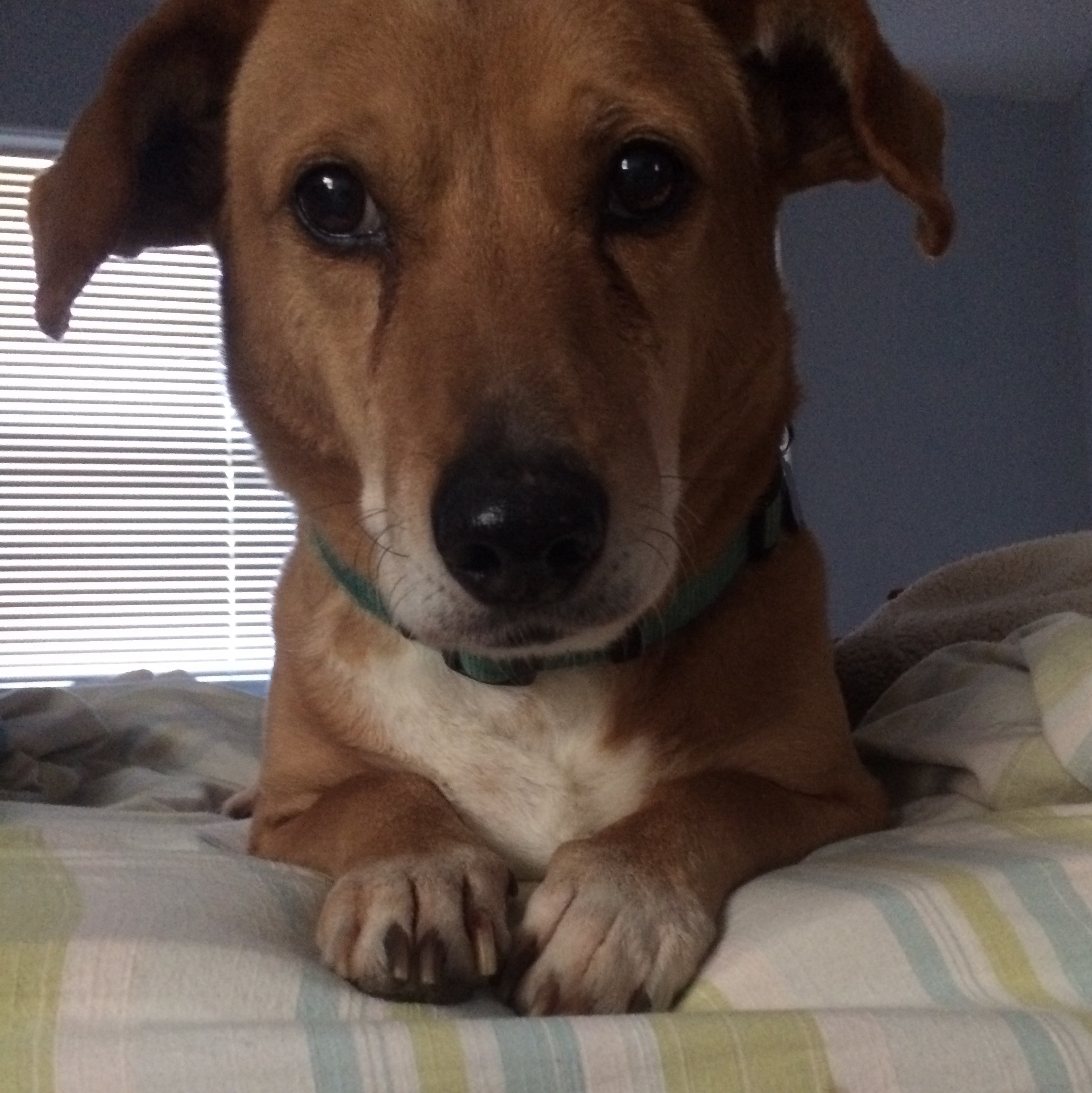
Viña Vik
Millahue Apalta Red Blend 2011
A new upcoming Chilean icon blend @ £100-£120 that’s becoming a favourite of mine 😍 Did you know they play relaxing music to the wine in the barrel whilst it develops 💗 I reviewed the 2012 a few weeks back 😉 and can’t wait for 2013 to come out! I’ve still not tried their first 2010 release ... yet
📍 Vina VIK 2011
🏵 94 points w/ much more potential 👍
🍇 55% Cabernet Sauvignon, 29% Carmenere, 7% Cabernet Franc, 5% Merlot & 4% Syrah 😍
🍷Opaque blackened ruby
👃 Chocolatey spicy rich blackcurrant & dark plum w/ soft oak, vanilla, blackberry, raspberry, dark cherry, wet leaves, herbs, a hint of purple flower, blueberry & minerals
👄 Full body of rich silky intense but balanced black fruits in oozy melted chocolate & creamy blueberry w/ a raspberry liquorice backbone in fine rock minerals
🎯 Long black fruit, raspberry, touch dry mineral & cocoa linger w/ a lasting purple teeth stain 😁 — 7 years ago







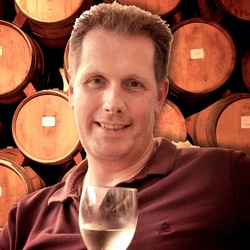
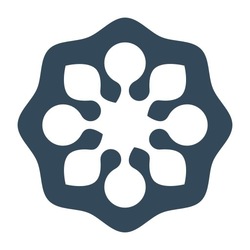
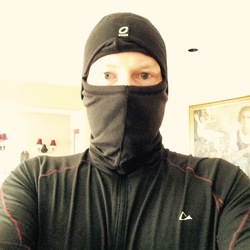
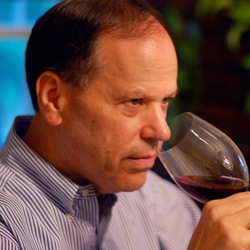
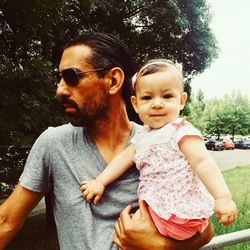
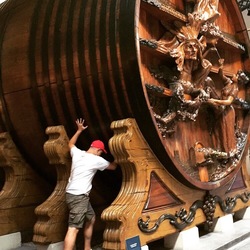
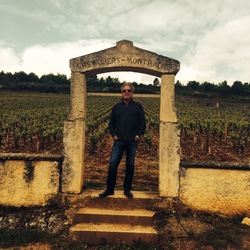
Sipping Fine Wine
Blend of 55% Chardonnay, 35% Pinot Noir and 10% Pinot Meunier, pale lemon color with aromas of citrus, floral and biscuit notes, fine bubbles and light mousse, on extended lees aging. On the palate flavors of crisp apples, peach and lemon notes, savory mineral, complex. Long ending with fruit and slight toasty biscuit character. — 3 years ago